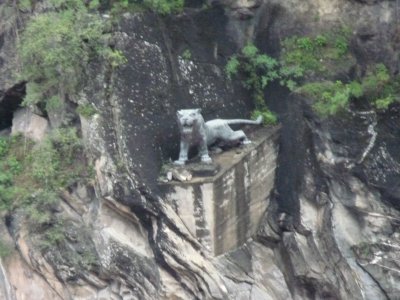
Which rock did the tiger use to leap across the gorge.
Was it in the upper, middle, or lower, gorge? Or all three?
Fortunately someone had planted a concrete tiger at the precise spot which settled our family argument forever.
Well, almost...............
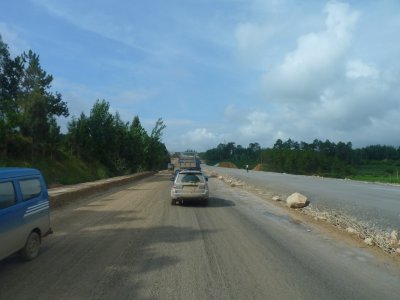
Fortunate as we had a long way to travel (523 km).
Unfortunately we met some road works.
Bumpy, muddy, traffic bound, road works.
And further on about 20 km of single lane expressway behind a slow truck.
Which meant our drive was about 12 hours including breaks.
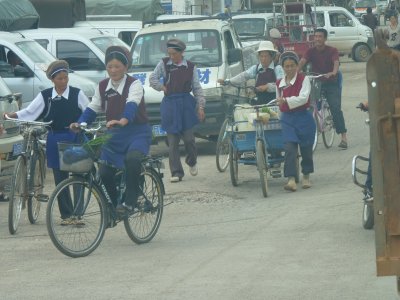
Sometimes bicycles are the norm. Sometimes motorbikes. Sometimes bongo vans with windows and seats.
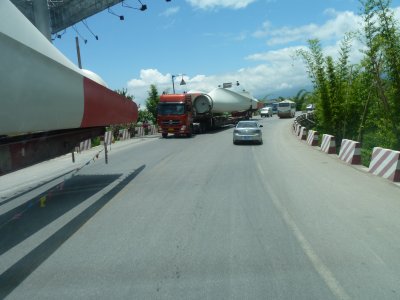
The blades weigh about 300 kg each. Just awkward.
We counted about 20 trucks. Each with 3 blades.
A small contrast with Aus when we met similar. The Aus blades were inside a jig on the back of a truck, 2 blades per truck, and 3 trucks.
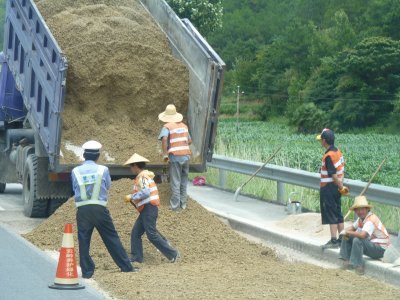
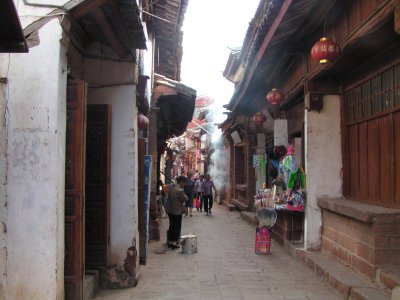
Salt is one of those things that is essential to life. Those that have it thrive. Hei Jing had lots of salt so thrived for a very long time.
At one time it paid more than half the tax collected on salt in Yunnan.
Taxing salt is quite clever from a government perspective. Everyone needs salt. A tax on salt is thus like a poll tax.
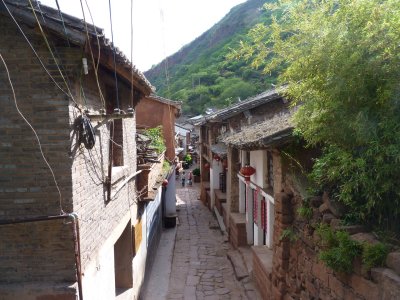
"De Zheng Fang was dedicated to the hope that the Emperor would administrate benevolent rules after taxes had been collected."
There is no indication as to whether he died happy.
But we thought perhaps a very "Chinese" approach to life.
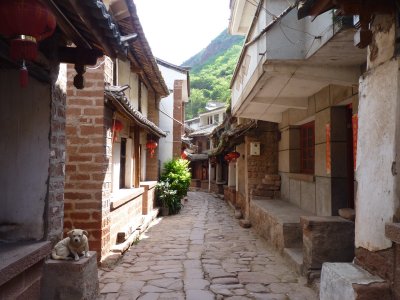
Mostly deserted until later in the day.
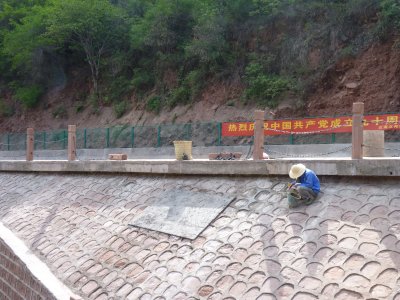
On advice from some locals we ventured further into town.
Roads were getting a bit tight for us and the bridge looked a bit light.
So we turned around.
In doing so we broke a couple of posts. This is the crime scene the next morning.
We did speak to a couple of the locals at the time and were apologetic. Given our state of tiredness after the long day's drive we thought it prudent to retreat to the car park as a crowd began to gather.

The factory under the chimney was derelict.
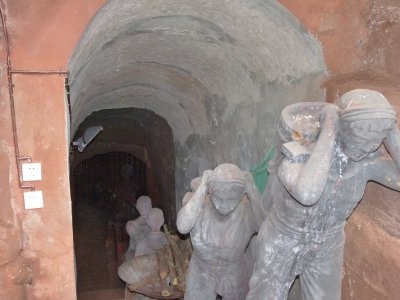
Dug into the base of the sandstone cliffs.
This is a model at the entrance to the first well to be discovered and developed. Miners carrying buckets of brine from the well.
Sunshine then coal fires were used to evaporate the water to leave the salt.
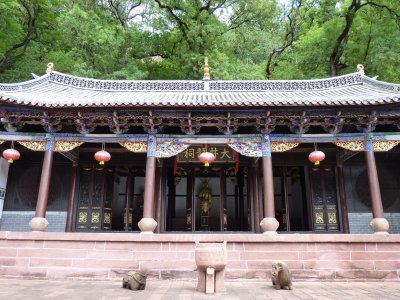
This one is dedicated to local deities but most major non-Christian religions were represented in the town.
We also noticed some Muslim restaurants.
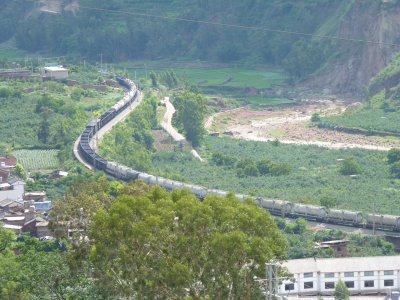
This is a double header mixed goods (mostly coal trucks and petrol tankers. No guard's van.
Single line with passenger and goods in both directions.
All night!
The line is electric, rebuilt about 2003 according to the stamp on the rails. Very heavy welded rails.
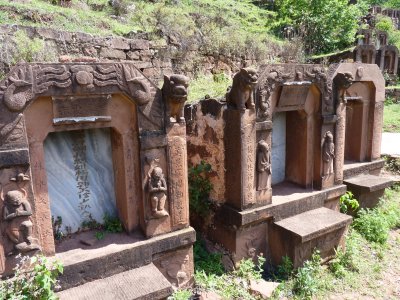
Warm and sticky.
Most of the hillside is covered with tombs.
Apparently for monks not salt miners.

All the locos we saw were the same. Apart from the number.
No sort of life at all for a train spotter.
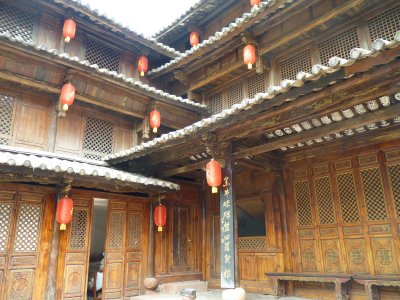
Fascinating place with more than 100 rooms on three levels.
It has been turned into a hotel which makes it a little incompatible with sightseeing tourists.
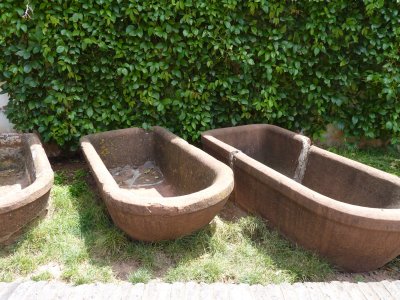
I don't think they were intended for use by the hotel guests.
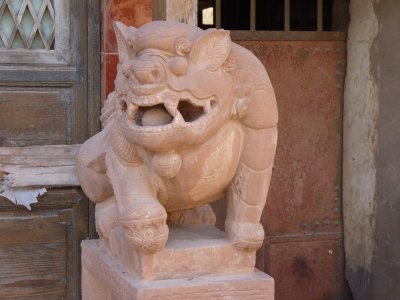
The ball in the mouth has been carved in-situ and will roll around.
Lesser carvings, not so much detail and the ball is fixed, are also around the streets.
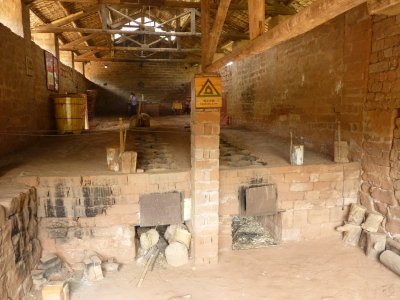
A couple of fires and a couple of rows of salt pots.
This is the last step in the process where the remaining water is driven off to leave salt.
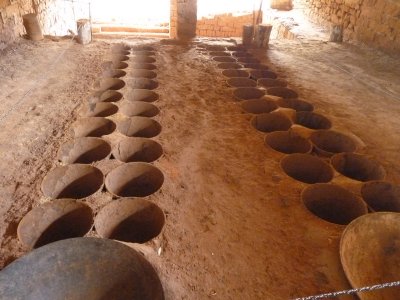
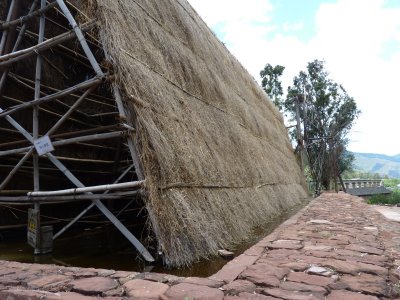
Large surface area catches the sun to evaporate water.
Its then through a succession of ponds to evaporate more. Then to the salt pots.
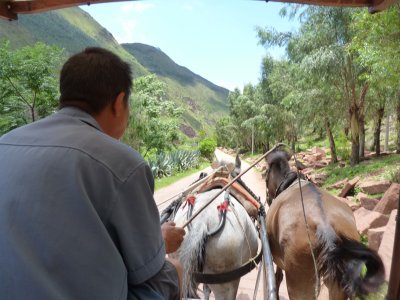
We let the horses do the work.
It wasn't just tourists using the horse carts. Locals in nearby villages were using them.

Most places sell cakes by the each. This gentleman weighed them.